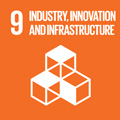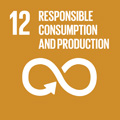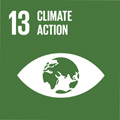- Docente: Roberto Patuelli
- Credits: 8
- SSD: SECS-P/02
- Language: Italian
- Teaching Mode: In-person learning (entirely or partially)
- Campus: Rimini
- Corso: First cycle degree programme (L) in Economics of Tourism (cod. 8847)
Learning outcomes
At course completion, the student is expected to have acquired the fundamentals of the macro- and micro-economic analysis of tourism. In particular, the student should be able to: - evaluate through which mechanisms and to what extent tourism influences economic systems; - analyse the behaviour of consumers and touristic firms, demand and supply of touristic goods and services, and the equilibrium of the tourism market; - identify and analyse the strategies of touristic firms; - identify and analyse the different types of competition typical of the tourism market.
Course contents
- Definitions and content (Ch. 1)
- Tourism in the economic system (Ch. 2) + tourism multiplier (Ch. 12.1-2 + additional material on the regional multiplier) + input-output multipliers (additional material) + tourism satellite accounts (additional material)
- Economics of destinations (Ch. 3 (excluding sections on marketing/management/web marketing) + additional material on revenues and elasticity, and on forecasting)
- The tourist as a consumer (Ch. 4)
- More on the tourist-consumer theory (Ch. 5, excluding Sections 5.5, 5.6 and 5.7.4)
- Seasonality in tourism (Section 6.5)
- Tourism firms (Chs 7-8, until yield management)
Readings/Bibliography
Main textbook: Candela G. and P. Figini (2010) Economia del Turismo e delle Destinazioni. McGraw-Hill, Milan.
For non-Italian speakers, the main textbook is available in English as well, in a slightly revised form, as: Candela G. and P. Figini (2012) The Economics of Tourism Destinations. Springer, Heidelberg.
Additional textbooks used during the course: (1) Dwyer L., P. Forsyth and W. Dwyer (2010) Tourism Economics and Policy. Channel View Publications, Bristol; (2) Armstrong H., J. Taylor (2000) Regional Economics and Policy (3rd ed.). Blackwell Publishing, Malden.
Any additional material with respect to the main textbook is made available online by the instructor on the Virtuale platform.
Teaching methods
In-class lectures.
Assessment methods
The exam is carried out in the form of a set of multiple choice questions (33 minutes of time).
Such questions will include, in addition to aspects tied to theory and the texts used during the course, micro-exercises (single steps from the exercises).
The exam will be carried out in the computer lab.
During the course, the following materials are made available on the Virtuale platform: (i) all solved exercises, (ii) a high number of past exams, (iii) the entire course's slides.
Students who are not fluent in (reading or writing) Italian should contact the instructor at least a week before the examination to ask for an English examination text.
A positive final mark can only be refused once. Refusal of the grade has to be communicated via email within the day of the subsequent office hours of the instructor.
Teaching tools
- Teaching material.
- Teaching assistant (tutor).
Office hours
See the website of Roberto Patuelli
SDGs



This teaching activity contributes to the achievement of the Sustainable Development Goals of the UN 2030 Agenda.
